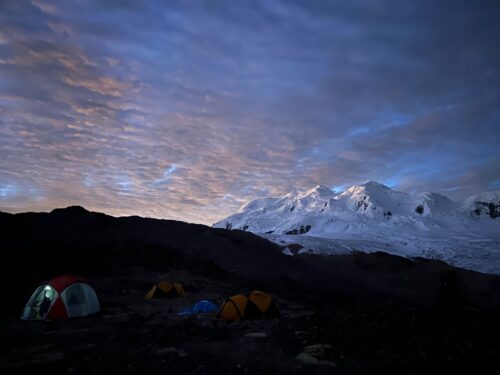The Andean vicuña may promote adaptation to global warming. From Scope, the blog of the Yale Scientific Magazine.
The Andes is the longest mountain range in the world, stretching along the entire length of South America, and is home to various organisms across its peaks and glaciers. Among its high-altitude inhabitants is the vicuña, an undomesticated relative of the llama that considers the barren, deglaciating landscapes of the Andes home.
A recent study published in Nature Scientific Reports, led by Steve Schmidt, professor of ecology and evolutionary biology at the University of Colorado Boulder, and Kelsey Reider, assistant professor of biology at James Madison University, suggests that vicuña latrines, or dung piles, play a crucial role in seeding post-glacial ecosystems. By depositing necessary nutrients into otherwise barren soils, these dung piles allow for new plant and animal life.
Glacial retreat—a process in which the ice and snow of a glacier gradually melt—has accelerated in recent years due to climate change. As the ice recedes, it leaves behind a dry, rocky environment that is difficult for plants and animals to thrive in. “The real impediment to colonization by plants, microbes, and animals is a lack of nutrients in the soil,” Schmidt said. However, the vicuñas may be the solution. These animals regularly visit these high-altitude regions and have a habit of designating communal “bathrooms,” repeatedly returning to the same spots to relieve themselves. Latrines greatly speed up primary succession—the process in which plants and animals first colonize uninhabited land—because they provide a source of nutrients that allow for new ecosystem development.
In order to collect this data, Schmidt and his colleagues traveled to the Andes and collected soil samples from the latrines themselves. The researchers selected six latrine sites and six control sites to compare their soil properties. These samples were collected and analyzed for soil and microbiological properties. Nutrients such as nitrates and ammonium are important sources of nitrogen that allow for plant growth. These properties, along with other important nutrients, were all found in significantly higher quantities at latrine sites compared to the control areas. The latrines also appeared to buffer temperature changes; the latrine sites showed less extreme temperature fluctuations near the soil surface than the adjacent controls, making for a more hospitable microclimate for plant growth.
The curious social behavior of these vicuñas seems to allow organisms from habitable low elevations to populate these post-glacial regions. Latrines may even provide nutrients to the nearby areas through rain-induced runoff that transports excess nutrients to surrounding soils. As climate change continues to push glaciers back, the runoff of vicuñas’ nutrients may be the key to revitalizing local microbial communities.
Schmidt and Reider are expanding on these findings, hoping to look at latrine sites on a regional scale. “I think the next steps are to map out where the latrines are a little better and kind of translate it to the whole landscape in that area,” Schmidt said. Schmidt notes that the indigenous people of the Andes assisted this research effort by transporting materials, gathering data, and maintaining the instrumentation that made this research happen.
While climate change may not be the vicuña’s number one priority, the key to reviving post-glacial environments may be found in the vicuña’s number two.

